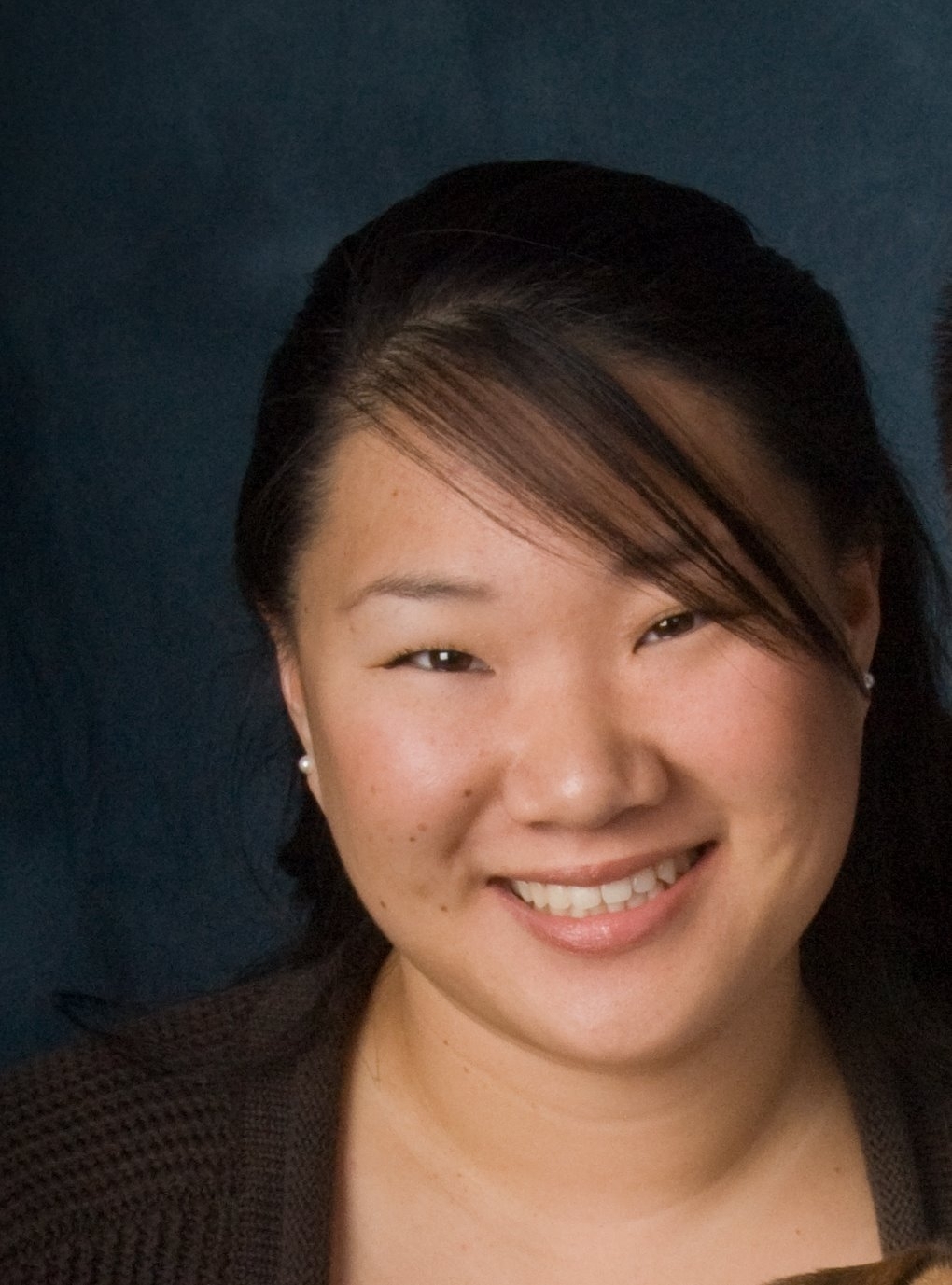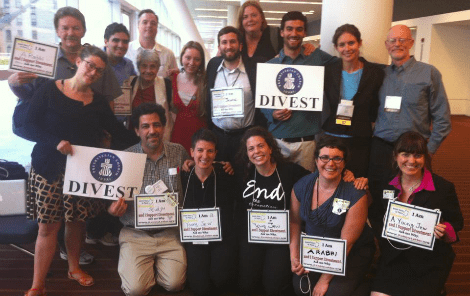Same-Sex Marriage at the 220th General Assembly
By Rev. Aimee Moiso, 2012 Teaching Elder Commissioner and Moderator for Committee on Civil Union and Marriage Issues View and Print as PDF.
View and Print as PDF.

In the two months since the 220th General Assembly concluded in Pittsburgh, I’ve had difficulty framing my experience as moderator of Committee 13, Civil Union and Marriage Issues. I’ve waffled between the cynical and the hopeful, the profane and the profound. Some days, I want to tell of political posturing and parliamentary shenanigans that got our conversations off course, wasted time, and frustrated the process. On those days, the story I tell focuses on the ways in which, despite our proclaimed commitment to discern the will of God together, commissioners on all sides came and went with opinions unchanged and hearts unwilling to entertain the idea that we might be wrong.
On more hopeful days, I tell the story of the committee praying and singing together, and of ending our work by sharing bread and cup. I recount the moments when commissioners told jokes to keep things light and warm in the enormous barn of a ballroom where we met. I remember the breathtaking expressions of personal transformation among the commissioners, and how they were willing to enter into the pain of division with a desire to be faithful and a longing for a way forward together.
In the end, no neat and tidy summary of our proceedings has emerged. The experience of Committee 13 was messy. It was complicated. It was rushed. It was tense. It had moments of transcendence. It was overwhelming. It was emotional. It was grace-filled. It was incomplete. It was imperfect. And it was as faithful an experience as I can remember having.
Committee 13 had fourteen overtures before it, but we really had only one item of business: How would the Assembly respond to the issue of same-sex marriage? Proposed options included reinforcing or strengthening the current language in the Directory for Worship, which states that “Marriage is a civil contract between a woman and a man” (W-4.9001); maintaining that language but making provisions for pastors in states where same-sex marriage is legal to perform such marriages at their discretion without prosecution; and changing the language in the Directory for Worship altogether so that marriage would be defined as being between “two people.”
___________________________________________
Mostly, I heard the deep pain of those who had testified before us being held and carried by the committee members. A group of 54 people who had been strangers 24 hours before were doing everything in their power to find a way to hold the church together.
___________________________________________
Knowing that the committee members themselves would likely arrive feeling anxious about the task before us, the committee leadership team took great care planning committee time, hoping above all to promote discernment over politicking, and to ease apprehensions and build trust within the group as quickly as possible. We ordered round tables for the committee to facilitate discussion and reinforce a sense of safety and comfort. During our first evening together, each of us on the committee wrote down our greatest hopes and fears, folded the papers closed, and passed them to one another to hold and pray over, acknowledging that our own hopes and fears might be directly opposed to the person for whom we prayed. We delayed entering into formal parliamentary procedure as long as possible, believing that the extensive time in open conversation and listening would offer the greatest possibility to release pre-established opinions, hear the thoughts and ideas of many, and perhaps emerge into a sense of consensus ahead of the pressure of final decision-making. We knew that the moment we entered into formal debate, we would have to bring forward an item of business, and that that item would then set a course for the discussions that followed, possibly cutting off further opportunities for creative problem solving.
After dinner on the evening of the first committee day, we returned wearily to our chilly ballroom. We had spent the day hearing extensive and emotional testimony from overture advocates, open hearings, and agency and General Assembly staff, and we needed to debrief. The leadership team gave the committee members time to talk in small groups at their tables and then share with the body: What were your impressions of the day? What did you hear that made an impact on you? What was difficult? What was eye-opening? Where did you see possibility?
What followed is now a blur. There were comments about particular speakers, intriguing or enlightening testimony, words of comfort and fear, of possibility and dead-end. I heard people whose minds were already made up, and people who were struggling for clarity. There was hesitancy about acting, and fear of inaction. There was occasional pontificating on morality or justice. There was inspiration, and there were tears. Many who spoke articulated the difficulty of the task before us and frustration over the impossibility of what we’d been charged to do. Mostly, I heard the deep pain of those who had testified before us being held and carried by the committee members. A group of 54 people who had been strangers 24 hours before were doing everything in their power to find a way to hold the church together.
Sadly, we sensed already that our goal was unattainable. The committee had two days in which to try to resolve a contentious battle that has been raging for months and years in state and national courts and legislatures—not to mention houses of worship. Whatever action the committee might take, it was unlikely to make any more than 50 percent of the church happy, and likely not even that much.
___________________________________________
The committee leadership team took great care planning committee time, hoping above all to promote discernment over politicking, and to ease apprehensions and build trust within the group as quickly as possible.
___________________________________________
Still, a quiet seed was sown in the evening’s conversation. Committee members had been moved by the experience of listening to and truly hearing from the real and earnest voices of the church, and by adding their own voices to the chorus. Several committee members reiterated the importance of having these conversations. We wish, some said, that we could make the whole church have this kind of conversation together.
On day two, we didn’t come up with a magic bullet to fix a broken and divided church, either. Once we entered into parliamentary procedure, debates and discussions were exhausting and difficult, sometimes tense and anxious. Though most people were patient and thoughtful, we still got tied in parliamentary knots, and, as anticipated, parliamentary procedure limited our ability to think creatively and speak freely. Some voices became dominant and others grew silent. I felt strongly that, especially for a committee wrestling with essentially one issue, the parliamentary process that allows one or maybe two motions to be discussed at a time simply does not facilitate discernment or problem solving. We needed a way to weigh several options simultaneously, to merge and distill ideas from various sources, and to move more freely from one option to another without the finality of up-or-down, for-and-against voting.
In the end, our committee’s recommendations were as divided as the church, and as confused and messy as our own hearts, minds and proceedings: we recommended study materials be created for churches to engage in meaningful conversations around marriage, civil law, the church, Scripture and theology. But the committee believed that while having these conversations was absolutely essential to our churches, such conversations—precisely because they are so difficult—were not likely to take place voluntarily. Thus by a narrow margin, the committee also voted to send to the General Assembly (and then to the presbyteries) a recommendation to change the Directory for Worship from marriage being between a man and a woman to marriage being between two people.
It would be disingenuous to say that those on the committee who voted in favor of the amendment proposal did so merely to foster conversation in the churches; many who voted in favor believe fervently that it is time to change our definition of marriage. Likewise, it would be inaccurate to claim that all who voted against this proposal were against changing our constitution; some preferred the option allowing for pastoral discretion, and others might have been undecided, or supportive in general but felt this was too volatile a time to make such a change.
In addition, other concerns that were not necessarily transparent underlay the recommendations. Committee members were reluctant to recommend an Authoritative Interpretation because there was wariness about any proposal that would be seen as a “top-down” approach imposing a decision upon churches and presbyteries without giving them an opportunity to ratify the recommendation. Given that commissioners were elected to make decisions on behalf of precisely those bodies, I wondered if this reticence reflected the debates in our larger culture about the nature of community, connectedness, and authority, or a broad anti-institutionalism in general.
___________________________________________
At one point during the debate on the Assembly floor, my vice moderator leaned over to me and said, “They really don’t want to talk about this.”
___________________________________________
The overall consensus of the committee was clear, however: though conversations about divisive issues are tough, they are absolutely necessary. They are painful, and they are integral to being the body of Christ. They require a kenosis of personal convictions and an openness to the witness of another that could change your heart, and they are the only way in which a divided church has a prayer of staying together.
I was scheduled to present our committee’s report just after lunch on the Friday of General Assembly. As the recess for lunch was called, I saw people lining up at the microphones to speak for and against the forthcoming report for our committee. I couldn’t help but feel like perhaps we would not be entering plenary with a spirit of discernment.
After introductory remarks, we brought our first item of business: the amendment to the Directory for Worship, to which two minority reports were attached. The Assembly spent the first hour offering proposals that would have put various limits on the debate. The following hours included prepared remarks from people who had lined up at microphones before lunch, and then some extemporaneous discussion. The Assembly then summarily voted down the first and second minority reports, and then voted down the main motion.
At one point during the debate, my vice moderator leaned over to me and said, “They really don’t want to talk about this.”
Perhaps he was right. When the dust had settled, the Assembly recommended that the churches engage in study together, but without the impetus the amendment would have provided. Of course, some argued that proposing the amendment to presbyteries would have ended conversation right then and there, as churches opposed would simply leave. Others who have been active in the debate over same-gender relationships for decades noted wearily that the conversations have already taken place to no avail.
___________________________________________
I realized with a jolt that on the floor a hunk of bread lay on top of one of the crisp white forms used to propose a motion. The juxtaposition was dramatic: the body broken atop the form by which we initiate change; the symbol of our unity and a tool of our polity; the dry and crumbled intersection of holiness and cynicism, profound and profane.
___________________________________________
Yet the experience of the committee—some of whom were practiced in the politics of the church, and others who were brand new to it—demonstrated that there is still something faithful about listening and being heard, because of what it does for our hearts and our humility. Few believe this issue will not return in future years, and the overwhelming YAAD (Young Adult Advisory Delegate) and TSAD (Theological Seminary Advisory Delegate) votes in favor of the amendment seems to indicate it will head to the presbyteries eventually in any case. Whether, in the interim, congregations and presbyteries will take the opportunity to use the study materials currently being prepared for their use and dig deep into these difficult subjects together remains to be seen.
After the final plenary session, I went back to our committee’s gigantic ballroom. The room was in the process of being cleaned; the chairs were stacked, but the name tags, papers, and other residual bits from our time together were still on tables and the floor in various states of disarray. I was caught off guard to see that the remainder of the communion bread and the grape juice bottle had been casually tossed aside. I realized with a jolt that on the floor a hunk of bread lay on top of one of the crisp white forms used to propose a motion. The juxtaposition was dramatic: the body broken atop the form by which we initiate change; the symbol of our unity and a tool of our polity; the dry and crumbled intersection of holiness and cynicism, profound and profane.
Few would dispute that our current national political climate is, in a word, polarized. But there is a significant difference between the division of our country and the division in our church: every two years, our church gets together for the express purpose of talking to each other. We set up a system of discernment and decision-making that values multivalent voices among us, that seeks to hear from divergent opinions and that rests firmly on the belief that none of us has the full measure of truth. The members of Committee 13 spent a whole day simply listening and reflecting on what they had heard, and we were better and more faith-filled for it. When was the last time that happened in Congress?
Our system isn’t perfect. Parliamentary procedure was often more of a hindrance than a help to our committee’s work and process. Further, the progress we did make toward mutual trust and forbearance in committee was all but absent in the General Assembly plenary discussion, where distrust of committee action was commonplace and even discussing the time allotted for listening—let alone the listening itself—set off rancorous debate.
But there is something to be said for believing—especially in divided times—that it is not just important but faithful to get together and listen.
See more articles like this one from the Oct 2012 issue, “The Backstory of General Assembly”







Unbound Social